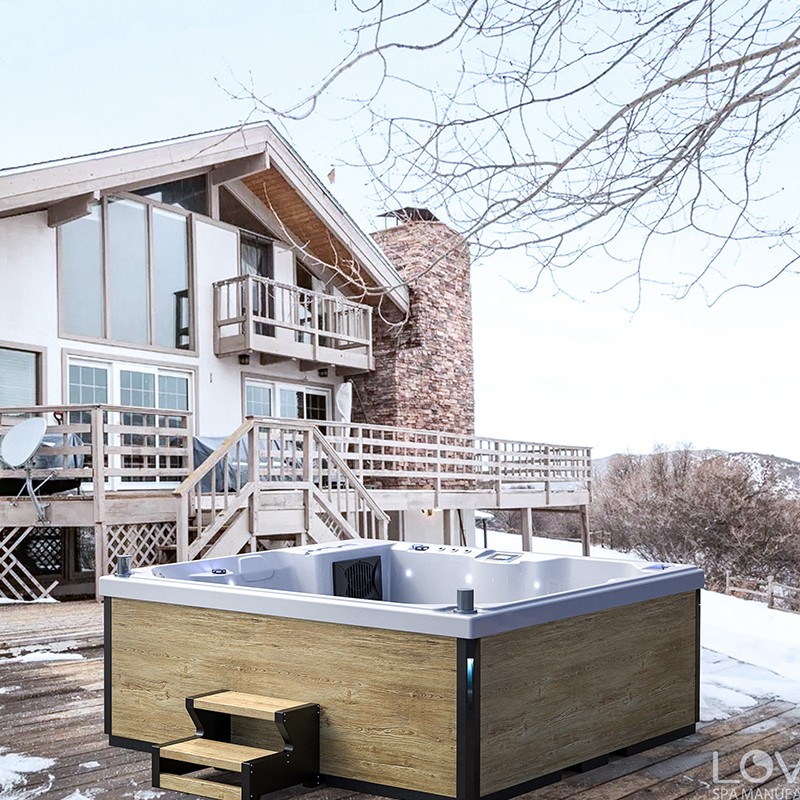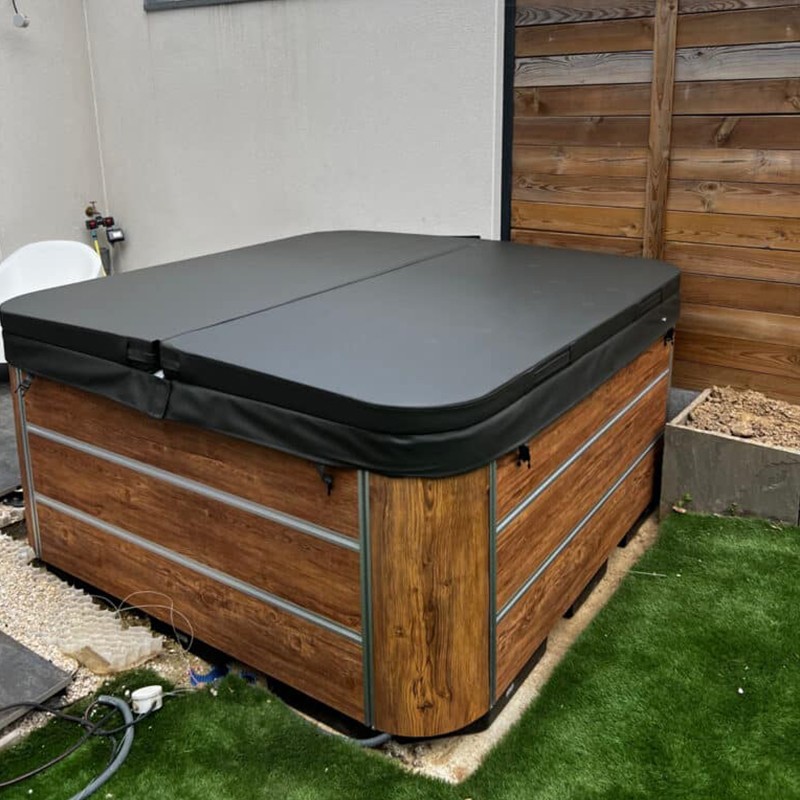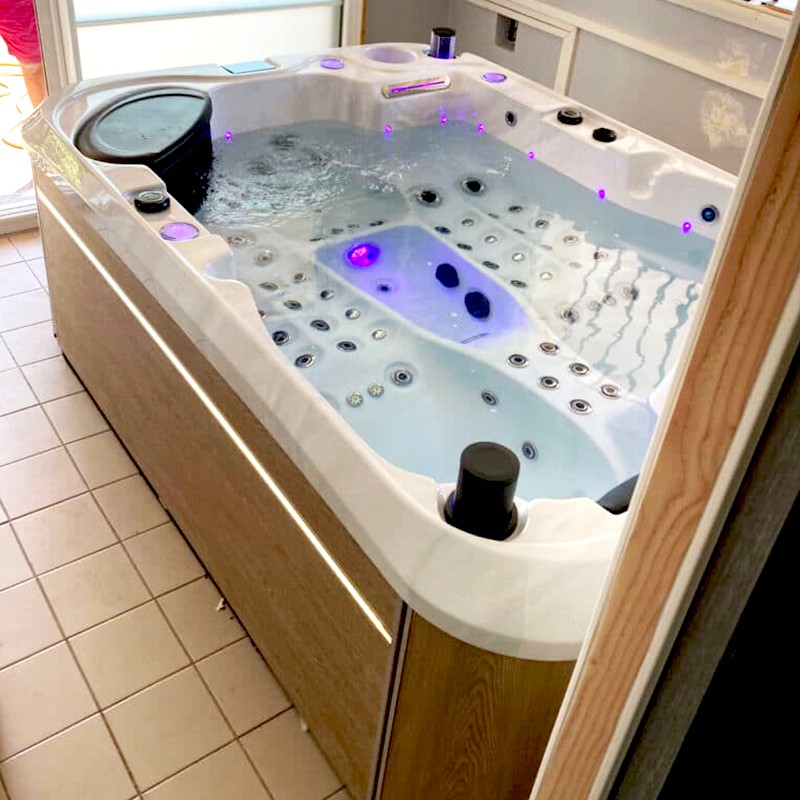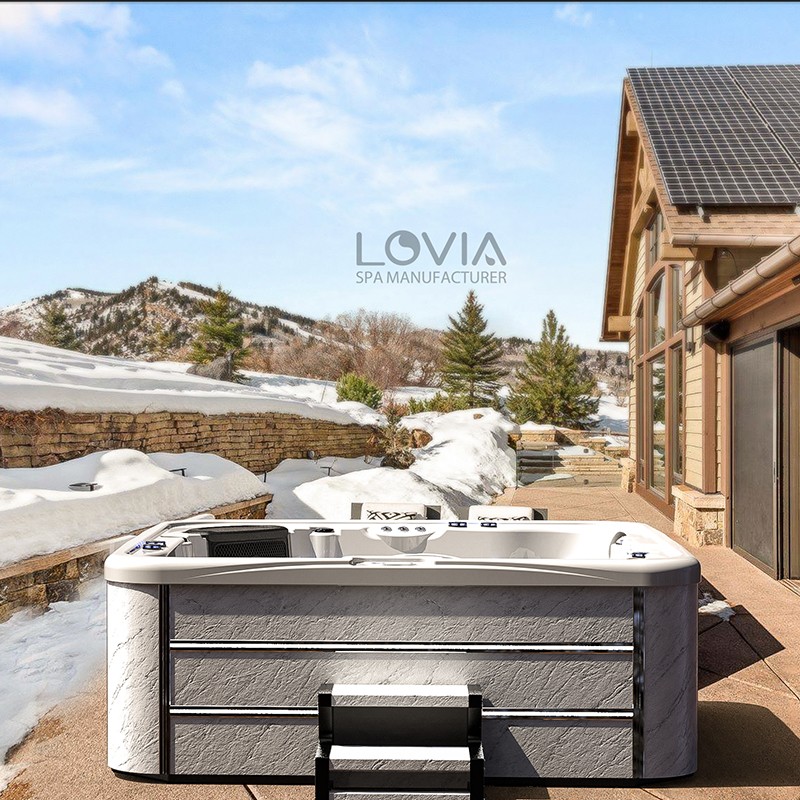
How to prepare your outdoor hot tub for the winter?
2024-12-03 15:35For many families with outdoor hot tubs, ensuring that the hot tub is safe during the winter is an important issue. Although many people enjoy the warmth and comfort of a hot tub during the winter, extreme cold weather places additional demands on the safety, energy consumption, and maintenance of the equipment.
In order to ensure that your outdoor hot tub can still operate normally in the winter and will not be damaged by cold weather when not in use, it is essential to make adequate preparations for the winter. This article will provide you with detailed information on how to prepare your outdoor hot bathtub for the winter from multiple aspects.

Why do you need to prepare your outdoor hot tub for the winter?
The drop in winter temperatures will affect the normal operation of your outdoor hot tub. The drop in temperature may cause problems such as difficulty in regulating water temperature, freezing and cracking of pipes, and overload of the power system. If you are not fully prepared, these problems will not only affect the service life of the equipment, but may also result in high repair costs and energy consumption. Therefore, taking protective measures for your outdoor hot tub before winter can avoid potential risks and extend the service life of the equipment.
Prevent pipes from freezing
The pipes and water pumps inside the hot bathtub are the most vulnerable parts in cold weather. When temperatures are near or below freezing, the water in your tub can freeze, causing pipes to burst or pumps to break. To avoid these problems, it’s important to make sure the water doesn’t freeze in the pipes during the winter.
Reduce Energy Use and Expenses
Running a hot tub in cold temperatures requires more energy to maintain the water temperature. Without proper insulation and management, your hot tub’s heater will run at high capacity for long periods of time, significantly increasing your electricity bill. Therefore, advance preparation and maintenance can help reduce unnecessary energy consumption.
Extend Equipment Life
Whether you plan to use your hot tub in the winter or not, regular maintenance and proper winterization can go a long way toward reducing equipment wear and tear. Proper winter protection not only prevents damage from cold weather, but also improves the overall durability of your hot tub.

What are the basic steps to winterizing your outdoor hot tub?
Preparing your outdoor hot tub for the winter involves a multifaceted effort that includes both basic maintenance and cleaning, as well as some technical means to ensure your equipment can handle the cold.
Cleaning and Maintenance
Before the winter hits, it’s important to ensure your hot tub’s water quality, filtration system, and surfaces are clean. Impurities in the water can cause additional damage to the equipment in cold weather, and a clean filtration system ensures that the water flows smoothly and prevents dirt from clogging the pipes. Specific steps include:
● Drain and clean the tub: If you plan to not use the tub in the winter, it is recommended to drain the water completely to prevent the water from freezing in the cold environment. After draining the water, wipe the inside and outside surfaces of the tub with a mild detergent to remove dirt and mineral deposits.
● Clean the filter: Remove the filter and rinse it thoroughly with clean water to remove attached impurities. If the filter is extremely dirty, it is recommended to replace it with a new one.
● Check the pipes and equipment: Check the hot bathtub pipes, water pump and heater for any leaks, looseness or other damage. Make sure all parts are in good condition.
Adjust the water temperature
If you plan to continue to use the hot tub in the winter, controlling the water temperature is key. Keeping the water temperature in the right range can ensure comfortable use and prevent the water temperature from freezing. The recommended water temperature should be maintained between 100°F and 104°F (about 38°C to 40°C).
When the outside temperature is very low, consider raising the water temperature slightly to ensure that the heater can effectively withstand the cold weather, but it is not recommended to exceed the recommended range to avoid additional stress on the equipment.
Use a thermal cover
A thermal cover is a must-have tool for outdoor hot tubs in winter. It can effectively reduce heat loss, keep the water temperature stable, and reduce the workload of the heating system. When choosing a hot tub cover, make sure it is of good quality, sturdy material, and can effectively prevent cold air from entering the tub.
It is also important to regularly check that the thermal cover is intact. If you find cracks, damage, or deformation in the cover, you should replace it in time to ensure the best insulation effect.
Turn on anti-freeze mode
Many modern hot tubs are equipped with an anti-freeze mode or automatic heating mode, which is specially designed to cope with low temperature environments. When the temperature drops to a certain level, the anti-freeze mode will automatically start to ensure that the water temperature remains within a safe range, thereby preventing damage to the pipes or water pump due to ice.
If your hot tub has an anti-freeze function, make sure this mode is turned on during the winter. If the device does not have this feature, you will need to monitor the water temperature more frequently and adjust the heating system manually to prevent the device from freezing.
Drain the pipes
If you decide not to use your hot tub during the winter, it is essential to completely drain the system. Water left in the pipes, pumps, and heaters can easily freeze in low temperatures, causing pipe cracks and damage to the device. Therefore, after draining, make sure to use an air pump or wet-dry vacuum cleaner to blow out the remaining water in the pipes.
Ensure the electrical system is working properly
When using a hot bathtub in the winter, it is also important to ensure that the electrical system is working properly. If the hot tub loses power during extreme weather, it may cause the water temperature to drop rapidly, potentially damaging the device. Therefore, check that the power line is properly connected, especially in severe weather, to ensure that the power supply to the device is not interrupted.

What are the safety precautions for using a hot tub in winter?
In addition to the maintenance and care of the device, there are also some safety issues that need to be paid attention to when using a hot tub in cold environments to ensure the health and safety of the user.
Avoid prolonged soaking
While the warm experience provided by a hot tub is comfortable during the cold winter, soaking for too long may cause health problems such as dehydration, low blood pressure, and dizziness. Especially in hot environments, vasodilation causes blood to flow to the extremities and reduces blood circulation in the core, which poses a potential risk to heart health. It is recommended that each soaking time should not exceed 20-30 minutes, especially for the elderly and people with heart problems, special attention should be paid to controlling the soaking time.
Keep warm in time
Before entering or leaving the hot tub, the cold air will quickly take away the body's heat, especially for a wet body. Therefore, it is recommended to prepare a thick bathrobe, towel or other warm clothing, and wrap the body immediately after getting out of the bath to avoid being exposed to the cold air for too long.
Choose the water temperature carefully
For most people, the ideal water temperature for a hot tub is between 100°F and 104°F. However, in the cold winter, many people may tend to adjust the water temperature higher to combat the cold air. But be careful that too high a water temperature may cause physical discomfort and even lead to more serious health problems. The right water temperature can provide comfort without causing excessive burden on the body.

What are the protective measures when not using a hot tub in winter?
If you decide not to use your hot bathtub for the entire winter, there are some additional protective measures that can help you ensure that the equipment is not damaged during the winter in addition to the usual draining and cleaning.
Completely drain the tank and pipes
Make sure all water sources inside and outside the hot tub are drained, especially residual water in the pipes and filtration system. Even a small amount of water may freeze in low temperatures and cause system damage. Using a wet and dry vacuum cleaner to clean up all residual water is an effective method.
Turn off the power
When the hot tub is completely drained, remember to turn off the power. This not only prevents unexpected situations caused by short circuits, but also reduces energy consumption.
Use an outdoor protective cover
For hot bathtubs that are idle for a long time, it is necessary to use a waterproof and windproof outdoor cover. It can protect the equipment from the erosion of wind and snow, and prevent dust, leaves and other debris from falling into the tub.
Since 1989, Guangzhou HuanTong Industrial has been a top supplier and exporter of outdoor wellness solutions, including hot tubs and swim spas. With industry-leading certifications and a monthly output of 1,200 units, we offer competitive prices, customized options, and factory direct sales to meet your needs.
